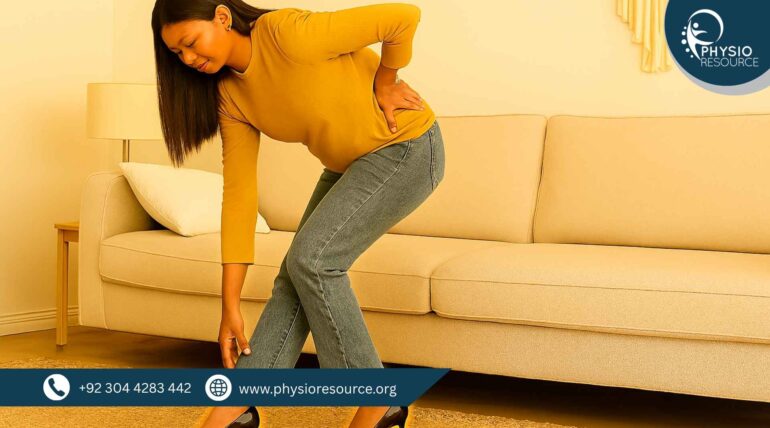
Women are crazy about high heels, their posture looks erect, seamless, and elegant. However, it is the case with very few women that, in the long run, daily use of heels is gradually altering the body alignment of their spine, the distribution of pressure in their knee joints, and the functioning of their feet. A heel pushes your body forward! Consequently, the lower back, calves, Achilles tendon, and forefoot muscles become tight and overloaded throughout the day. Eventually, you experience lower back pain, knee pain, shin pain, plantar fasciitis, tight calves, bunions, front tiptoe pain, and sometimes tingling in your toes.
This article is dedicated to all the women who, despite wearing heels in the office, at events, and at parties, still think, “Why do I feel pain at night?” The reason is that heels do not allow your joints to be in the neutral position; thus, your body bears the cost. The next big question: what is that?
Physio techniques can be used to take the pressure off your joints, minimize the damage, and keep you free from pain for the long term, without saying goodbye to heels completely.
Best Physiotherapy Tips for High Heel Users
1. Stretch Calves Daily (only 2 minutes)
The length of calf muscles is reduced by high heels. The wall calf stretch, performed before sleeping, is one way to maintain the length of the muscles and decrease the stiffness of the ankle.
2. Toe Spreading for 30-60 Seconds
Heels place a lot of pressure on the toes which can eventually lead to the formation of bunions. Using fingers or toe spacers to spread the toes is one way of protecting the forefoot.
3. Strengthen Glutes (Bridge Exercise)
The weight of the body is transferred to the front by wearing high heels which leads to weaker glutes and a hyperactive lower back.
Glute bridges restore the balance.
4. Select Heels Wisely
Go for:
- 2 to 2.5 inches (instead of 4 to 6)
- soft insole
- broad base instead of pencil heels
You’ll feel the difference in your joints.
5. Heel Breaks
Carry a pair of comfortable flat shoes in your bag. Make use of them whenever possible — especially when traveling, climbing office stairs, or going for a long walk.
Related post: Best Footwear for Back Pain Prevention
What are the problems caused by high heels?
- lower back pain
- disc compression
- knee strain
- ankle stiffness
- shin splints
- plantar fasciitis
- toe numbness
Most of the women do not pay attention to these until it is too late.
When is the right time to consult a professional?
Daily wearing of heels and already feeling lower back tightness, heel pain, or toe pain → you are recommended a posture assessment, gait analysis, and muscle balance correction.
Schedule your appointment now!
Physio Resource is known as the best physiotherapy clinic in Gulberg for spine, posture, women’s musculoskeletal conditions, and gait re-education. The clinic is led by Dr. Ahmad Bilal — one of the best physiotherapists in Lahore — who applies the most advanced physiotherapy techniques & movement science principles to treat posture damage caused by footwear. Our goal is not just to alleviate the symptoms but also to eliminate the underlying cause.
If you wear heels on a daily basis then take care of your spine, knees, and your future self first. Come to Physio Resource, Gulberg Lahore for your personalized physiotherapy plan, and get a same day appointment.
Physio Resource
Phone No: 0304-4283442
Address: 93-A1, Gurumangat Road, Gullberg, III Lahore
Meet the Author, Dr. Ahmad Bilal
Consultant Physiotherapist – MS NMPT, Spine and Posture Specialist. Internationally recognized for advanced physiotherapy techniques and one of the most trusted and skilled physiotherapists in Lahore. He has a special interest in correcting posture, women’s health issues, and managing chronic musculoskeletal pain.
Written by: Dr. Ahmad Bilal (Consultant Physiotherapist – MS NMPT, Spine & Posture Specialist)


